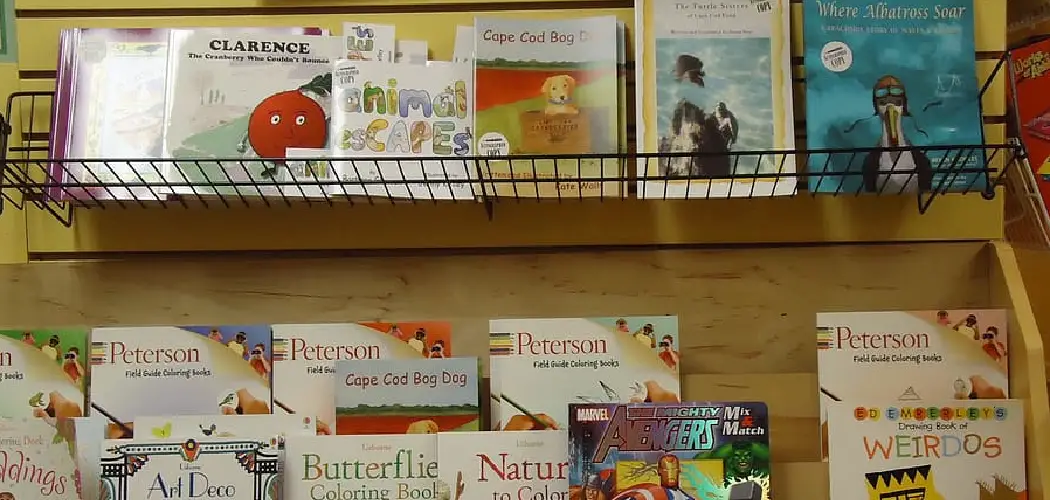Do you want to keep your children’s books from clutter and chaos? Are you looking for helpful tips on how to store kids’ books in an organized way? If so, then you’ve come to the right place! In this blog post on how to store children’s books, we will discuss the best practices for storing your child’s favorite books and keeping them safe.
We’ll dive into topics like plastic book containers that can be used to easily sort through book collections and different coatings that can protect paperbacks from wear and tear.
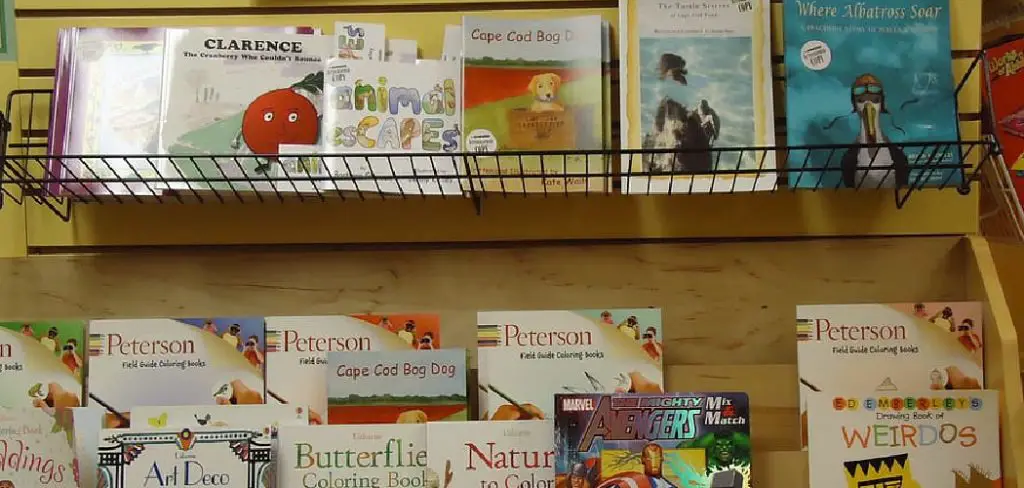
This is a great opportunity to get creative in finding storage solutions tailored directly for those beloved picture books, board books, e-books, or textbooks that often end up cluttering our home libraries. Let’s take a look at some of these easy ways you can keep your family’s reading material sorted out!
Needed Tools and Materials
Given below are some of the materials that you may need to organize your children’s books:
- Plastic Book Containers
- Magazine Files or Boxes
- Shelves
- Bookends
- Labels and Markers
- Shoe Boxes
11 Step-by-step Guidelines on How to Store Children’s Books
Step 1: Sort the Books Into Categories
Sort your children’s books according to genre, age range, or subject matter. For instance, divide them into fiction, nonfiction, educational, and picture books. This will help you organize them better while choosing what to read next.
It can also save you from the hassle of searching through a pile of books to find what you are looking for. But keep in mind that the sorting should be age-appropriate for your children. It would be best to make a list or use labels for easier reference.
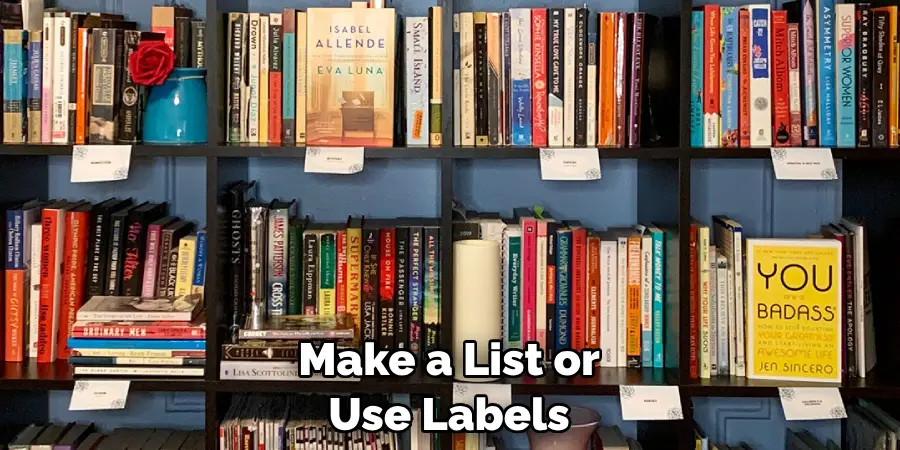
Step 2: Label the Books
Label the books to make it easier for your children to find what they are looking for. Use labels or markers and write down the genre, age range, or subject matter on each book cover.
This will help you sort them out quickly when needed. This will also save you from going through the entire shelf each time you are looking for something. if your children are old enough, they can help you create labels for their books.
Step 3: Invest in Plastic Book Containers
Invest in plastic containers that are specially designed for storing children’s books. These containers come with shelves, compartments and drawers that can help you organize different types of books according to their categories. You may also label these containers for easy access.
But make sure that the containers are child-proof and sturdy. Otherwise, your kids may end up breaking them. It is also important to check for any sharp edges that may hurt your child. You can also go for color-coded containers to make things easier.
Step 4: Make Use of Magazine Files or Boxes
Magazine files or boxes are a great way to store paperbacks safely without taking up too much space. They can be easily labeled and stored in any corner of the room. But make sure that the boxes are big enough to hold all your books.
You can also opt for expandable magazine files that offer more flexibility in terms of storage space. This is especially helpful if your child loves to collect books. If you are looking for a more aesthetically pleasing look, then go for colorful boxes or baskets.
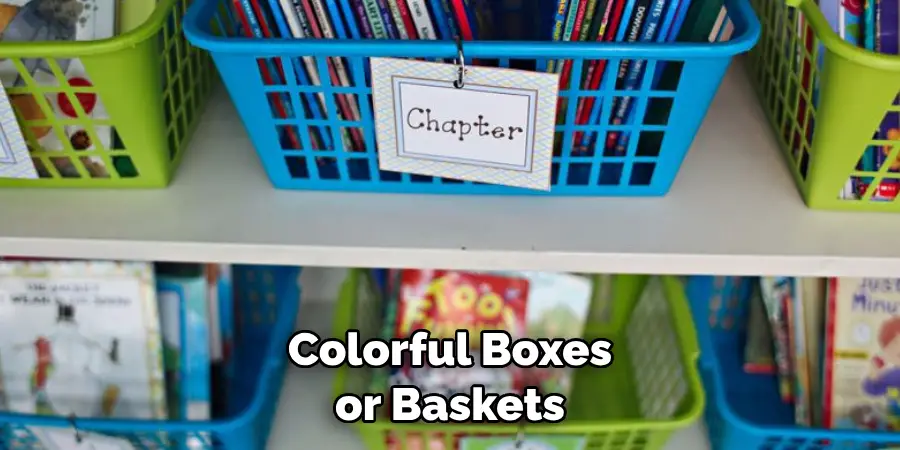
Step 5: Place Books On Shelves
If you want to keep your children’s books visible, then shelves are a great way to go. You can arrange them according to genre or age range and also make use of bookends to keep them in place. But, make sure that you use strong shelves that can bear the weight of all your books.
You may also opt for floating shelves to add some style to your room. It would be best to use labels for easy reference. This way, you can quickly identify what is stored on each shelf.
Step 6: Utilize Shoe Boxes
Shoe boxes are an economical solution for storing small paperbacks or board books. They can be used both as storage containers and reading nooks for kids. It would be best to have different colors and sizes of boxes so that you can quickly identify which one contains what.
You may also go for customized shoe boxes that are designed to store books. This is especially helpful if you have a lot of small paperbacks or board books.
Step 7: Use Plastic Sleeves To Protect Paperbacks
If you have paperbacks that may get damaged due to wear and tear over time, then you can make use of plastic sleeves to protect them. These sleeves will also help keep the books dust-free for longer periods of time.
It would be best to use acid-free sleeves to prevent any discoloration of the books over time. Depending on the size of your book collection, you can purchase the sleeves in bulk or in single packages.

Step 8: Store Away The Books That Are Not Being Read
If your child has outgrown a particular book or if they are no longer interested in it, then consider storing it away until they’re ready to read it again. This will help avoid clutter in your home library and prevent damage due to frequent handling. But, make sure that you store the books in a safe and dry place to prevent any damage due to humidity or moisture.
Step 9: Rotate Your Children’s Books
Rotating your children’s books every few months is a great way to ensure that they don’t get bored with what they’re reading. This will also give them an opportunity to explore new books and genres that they may otherwise have missed out on. It would be best to label the books according to their genre or age range for easier reference.
Step 10: Separate Books For Different Age Groups
If you have children of different ages, then it’s a good idea to separate their books into age-appropriate collections. This way, each child can access the appropriate book for their reading level without any confusion or mess.
You may also opt for book baskets or boxes that are specifically designed for each age group. However, if you’re short on space, then consider purchasing stackable bookshelves to store all the collections in one place.
Step 11: Keep Track Of What Your Children Are Reading
Keeping track of what your children are reading will help you know if they need more books of a particular genre or if certain books are no longer appealing to them. It is also important to note if any books are missing or damaged so you can replace them as soon as possible. Always make sure that your children are reading age-appropriate content and are not exposed to any inappropriate material.
By implementing these tips, you will be able to create an organized and stress-free environment in which your children can enjoy reading their favorite stories. With a bit of effort and creativity, you can make sure that your family’s collection of books remains safe and organized for many years to come! Thanks for reading!

Welcome to the world of book storage! We hope this guide on How to Store Children’s Books has been helpful in helping you create an organized home library. If there is anything else we can do for you or if you have any further questions, please don’t hesitate to reach out. We would love to hear from you and help in any way we can! Thanks again for reading!
Tips
- Labels and Markers Can Be a Great Way to Help Organize Your Children’s Books.
- Plastic Containers or Boxes Are Great Because They Help Keep the Books Dust-free.
- Magazine Files or Boxes Are Perfect for Storing Paperbacks Without Taking Up Too Much Space.
- Shelves Can Be Used to Display and Store Books While Bookends Will Help Keep Them in Place.
- Utilize Shoe Boxes for Small, Board Books.
- Use Plastic Sleeves to Protect Paperbacks From Wear and Tear.
- Store Away the Books That Are Not Being Read to Avoid Clutter in Your Home Library.
- Rotate Your Children’s Books Every Few Months for New Reading Experiences.
- Separate Books for Different Age Groups to Help Your Children Find the Appropriate Book for Their Reading Level.
- Keep Track of What Your Children Are Reading and Always Replace Any Missing or Damaged Books.
Do You Need to Use Professional Support?
If you need help organizing your children’s books, then it may be worth considering hiring a professional. Professional organizers can help you create an efficient and organized home library that is tailored to your family’s needs. They can also provide tips on how to keep the books clean and maintain their condition for years to come.
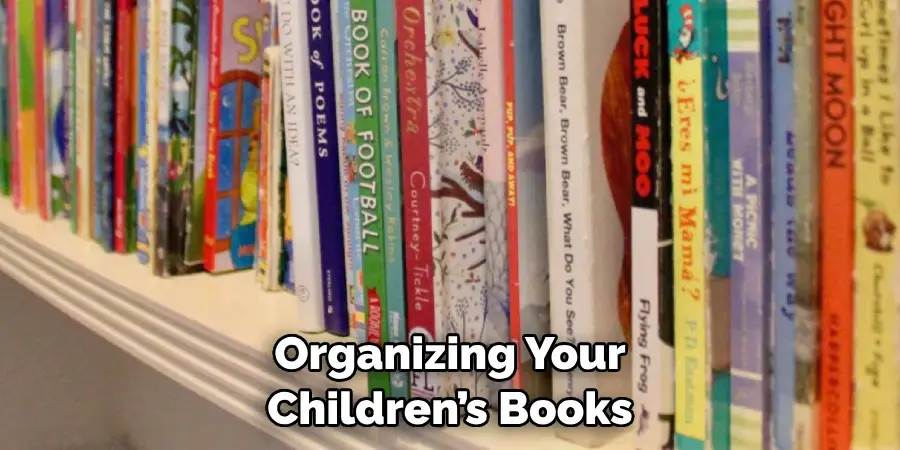
Whether you decide to handle this task yourself or enlist professional support, we hope you found something in this guide that will help make your book organization journey easier. Good luck! With a bit of effort and some guidance, you can create a cozy corner just for reading!
How Much Will It Cost?
The cost of hiring a professional to help organize your children’s books will vary depending on the services you need. Generally speaking, rates can range anywhere from $50 to $150 per hour. It is also important to note that some professionals may charge additional fees for supplies or materials if needed.
Be sure to ask for an estimate before signing any agreements so that you have an understanding of what the final bill will be.
Good luck! With these tips and some creativity, your children’s books will be in perfect condition for years to come! Thanks again for reading! Enjoy the journey!
Frequently Asked Questions
Q: What Are the Best Ways to Store Children’s Books?
A: The best ways to store children’s books include magazine files or boxes, stepping stools, labeling books and containers, placing books on shelves, utilizing shoe boxes, using plastic sleeves to protect paperbacks from wear and tear, storing away the books that are not being read, rotating your children’s books every few months, separating books for different age groups, and keeping track of what your children are reading.
Q: Do I Need Professional Help To Organize My Children’s Books?
A: You can handle this task yourself through organizing techniques such as labeling and arranging the shelves in an organized manner. However, if you need more help with this task then it might be worth considering hiring a professional who will provide tailored advice and guidance to create an efficient home library.
Q: How Much Does It Cost To Hire A Professional Organizer?
A: The cost of hiring a professional can vary depending on the services you need, but generally speaking rates range from $50 to $150 per hour. Some organizers may also charge additional fees for supplies or materials if needed. It’s always best to ask for an estimate before signing any agreements so that you have an understanding of what the final bill will be.

Q: How Often Should I Rotate My Children’s Books?
A: It is a good idea to rotate your children’s books every few months to ensure they are exposed to new stories and genres. This can help expand their reading interests and encourage them to explore new books that they might not have otherwise been interested in.
Conclusion
With these tips, you’ll have a much easier and more pleasurable experience organizing and storing children’s books. Taking the right steps by categorizing books, ensuring labels are organized properly, considering storage solutions, and allowing easy access to select books makes organizing an enjoyable process. Now that you know the basics of how to store children’s books, it’s time to put your newfound learning into action!
To take it one step further, consider getting creative with storage ideas or connecting the Blink Sync module which allows you to access more than 600000 audio narrations of stories. Ready to learn how? Take some time today to research this amazing tool and find out how you can connect your Blink Sync Module To Wifi–you won’t be disappointed!

